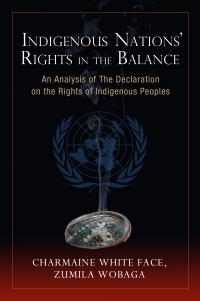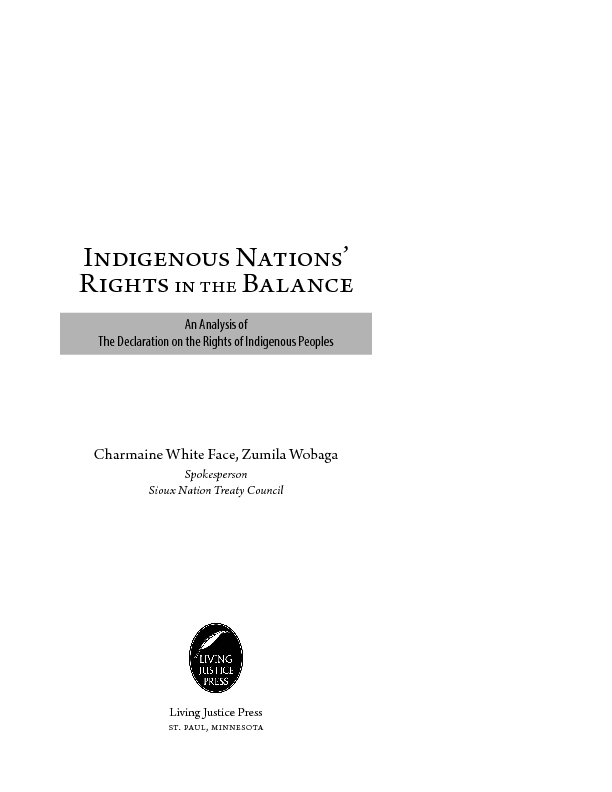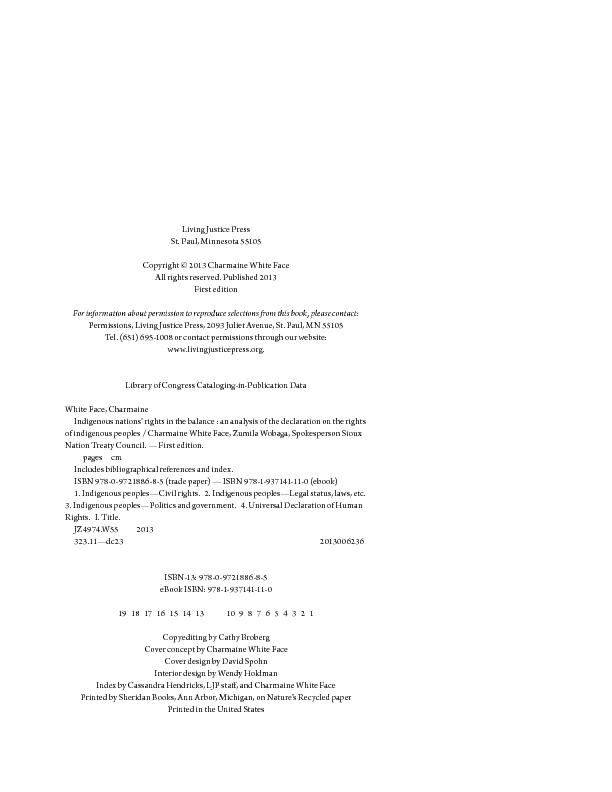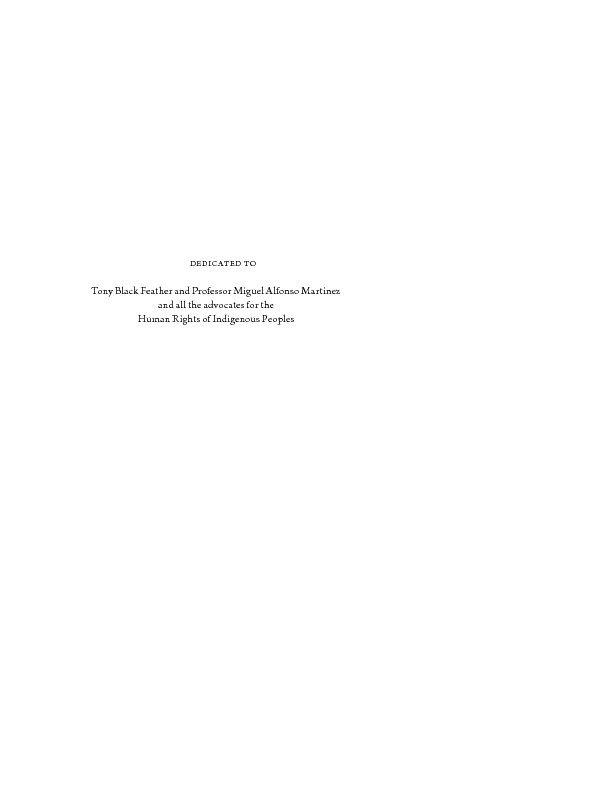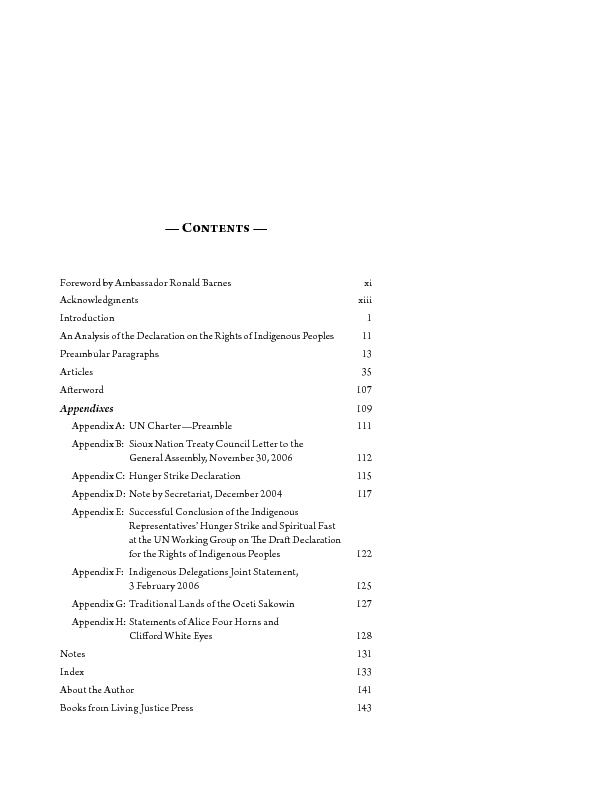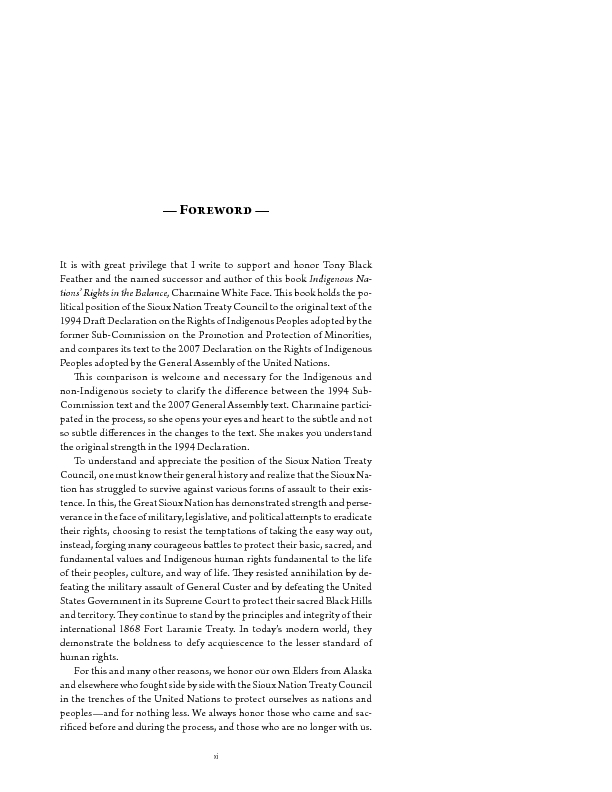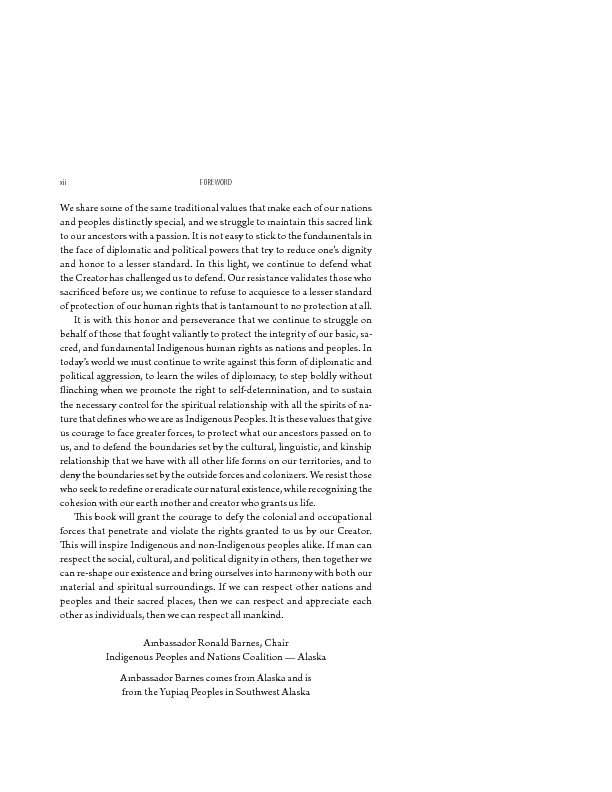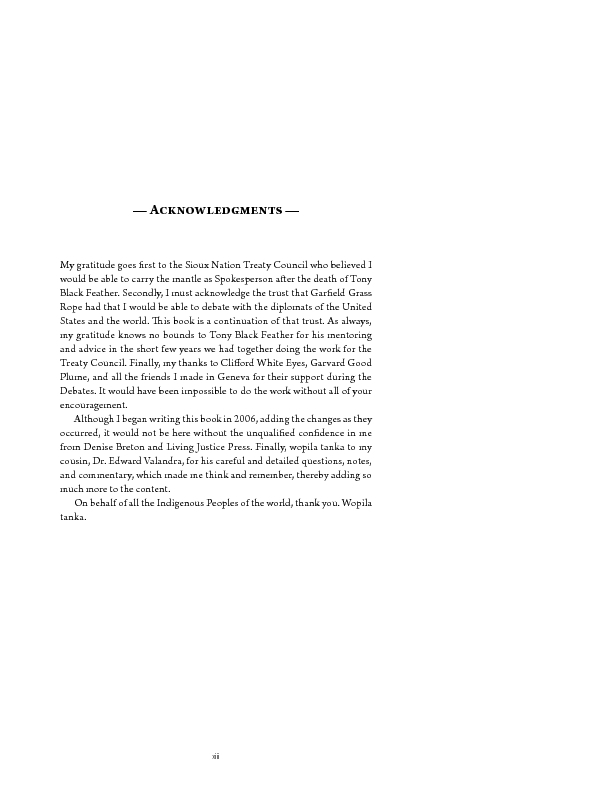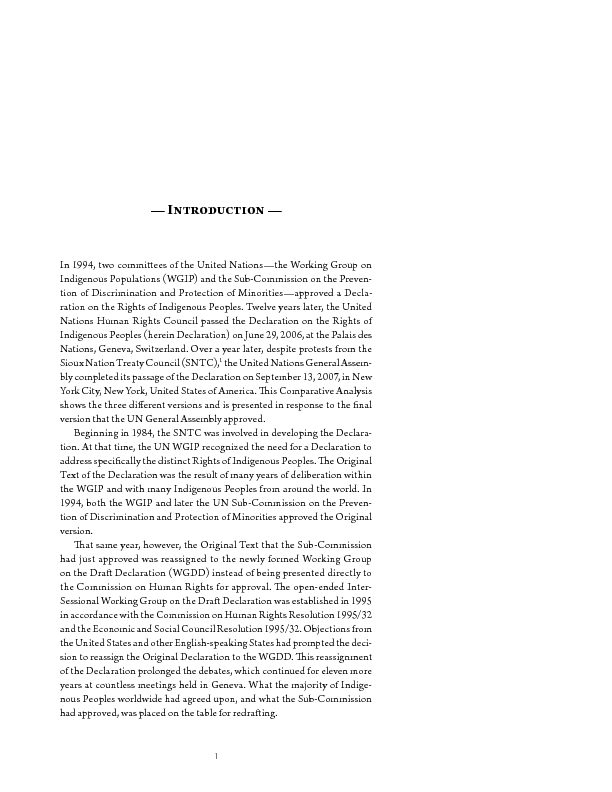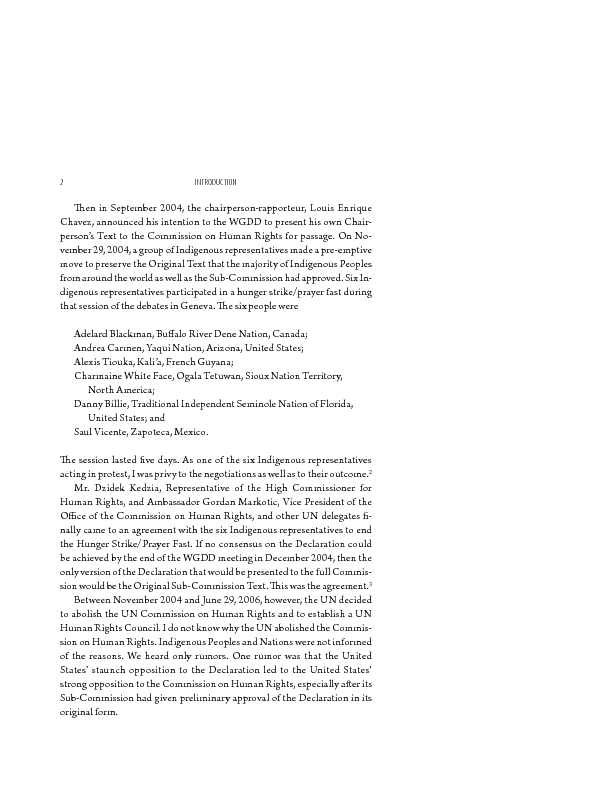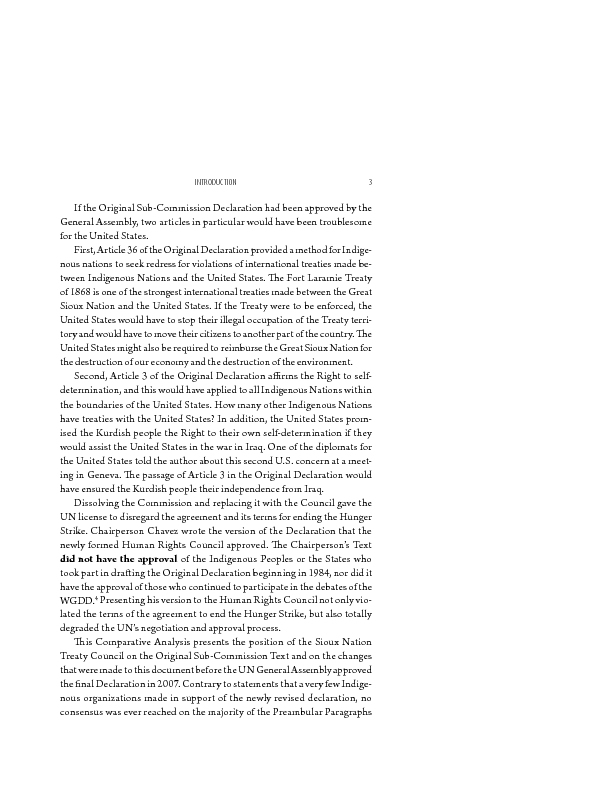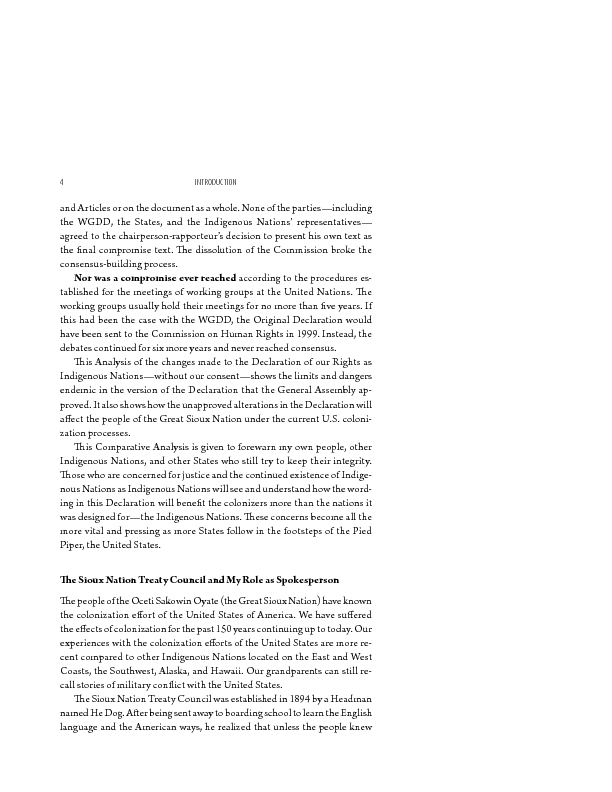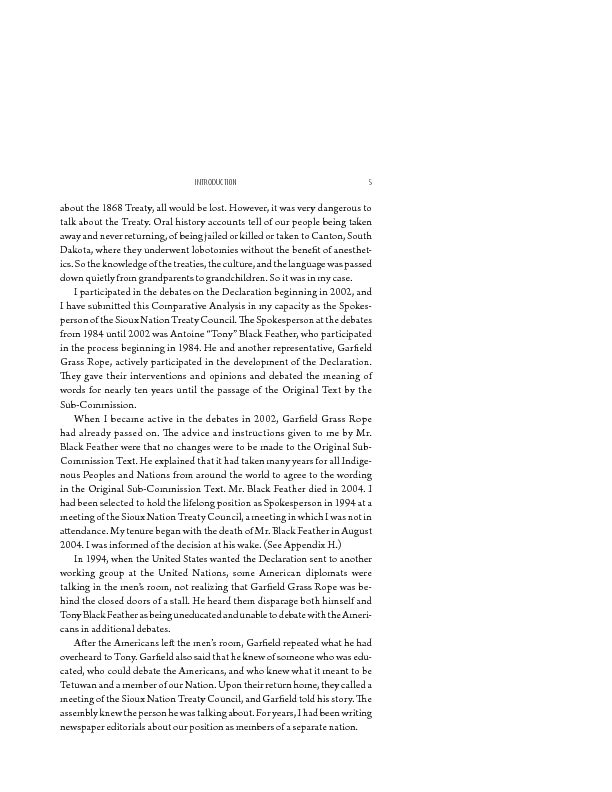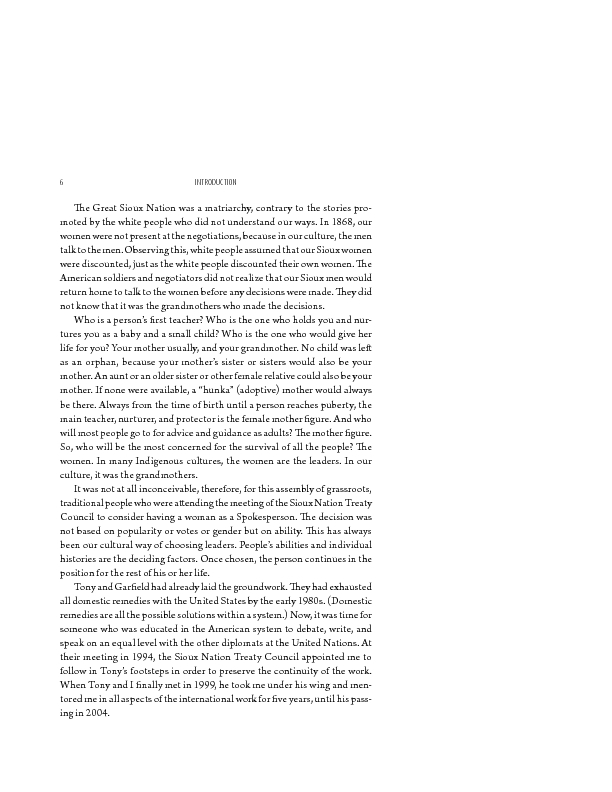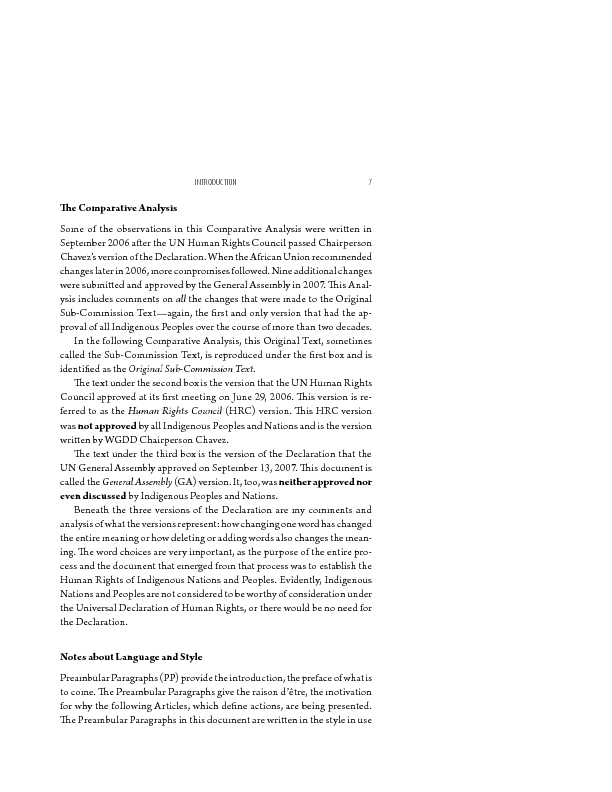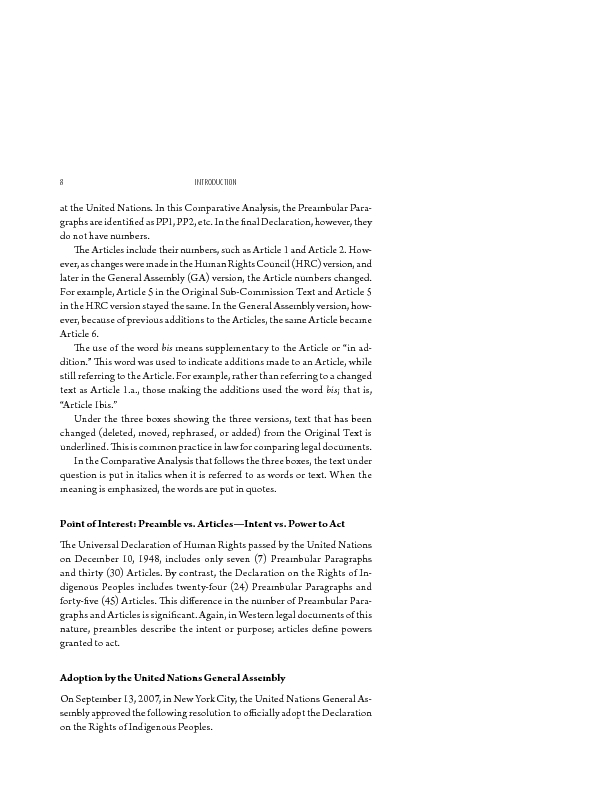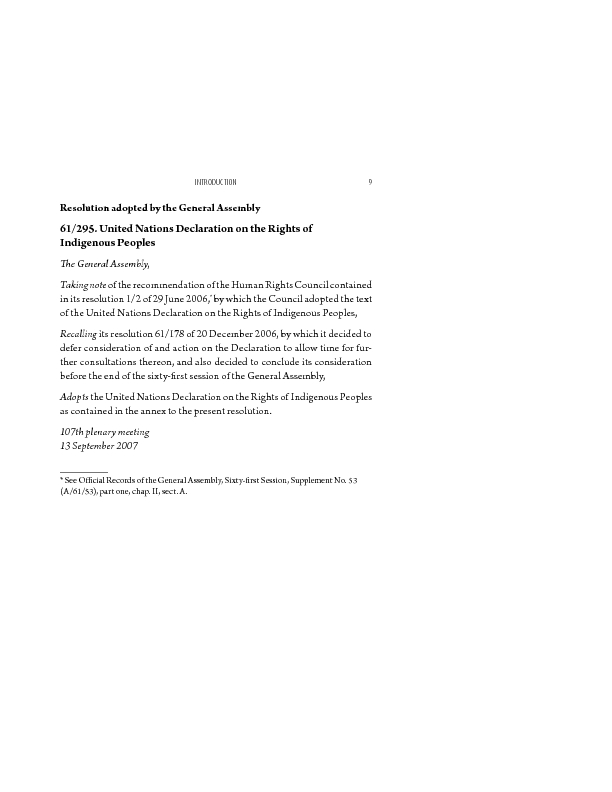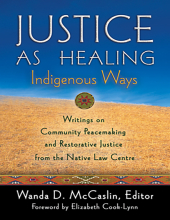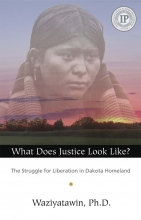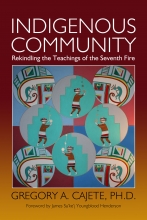Indigenous Nations' Rights in the Balance
*****IF YOU WISH TO ORDER HARD COPIES OF OUR BOOKS, PLEASE VISIT https://livingjusticepress.org*****
Indigenous Nations' Rights in the Balance
By: Charmaine White Face
Comparing three different versions of the UN Declaration on the Rights of Indigenous Peoples (DRIP), Indigenous Nations' Rights in the Balance analyses the implications of the changes made to DRIP for Indigenous Peoples and Nations. This is a foundational text for Indigenous law and rights and the global struggle of Indigenous Peoples in the face of modern states.
Title information
Between 1994 and 2007, three different versions of the Declaration on the Rights of Indigenous Peoples were passed by various bodies of the United Nations, culminating in the final version passed by the UN General Assembly. Significant differences exist between these versions—differences that deeply affect the position of all Indigenous Peoples in the world community. In Indigenous Nations’ Rights in the Balance, Charmaine White Face gives her well-researched comparative analysis of these versions. She puts side-by-side, for our consideration, passages that change the intent of the Declaration by privileging the power and jurisdiction of nation states over the rights of Indigenous Peoples. As Spokesperson representing the Sioux Nation Treaty Council in UN proceedings, she also gives her insights about each set of changes and their ultimate effect.
Charmaine White Face
Charmaine White Face, Zumila Wobaga (A Little Wise One Who Makes a Mark), is an Oglala Tetuwan (Lakota dialect) from the Oceti Sakowin (Great Sioux Nation) in North America.
From her early childhood, her paternal grandmother taught Charmaine White Face about the treaties that the United States and the Great Sioux Nation entered into. Her grandmother also taught her about the cultural differences between these two nations. This influence has permeated her writing and continues to affect her philosophy, thought, work, and life.
One of the few members of the Oglala Sioux Tribe to pursue a degree in the sciences, Ms. White Face completed a double major in Biology and Physical Science in 1973. She has used this education to teach environmental science at the college level.
A long-term community organizer, Ms. White Face began her organizing work thirty years ago as a volunteer on the Board of Directors for the South Dakota Indian Education Association, of which she was a member for five years. Over the years, she not only continued to volunteer her organizing skills but also worked as a professional organizer for a national environmental organization.
She also worked as an administrator for the Oglala Sioux Tribe on the Pine Ridge Indian Reservation. She took an active role in developing tribal laws, managing departments, and administering federal programs.
Woven throughout, she has been a political columnist. Her writings have appeared in magazines and essay collections in the United States and Great Britain. She authored a book entitled Testimony for the Innocent, which is a biographical account of her experiences as the Treasurer for the Oglala Sioux Tribe. For the past twenty years, her editorials and essays have urged political reform, social justice, and environmental protection and restoration.
Through her published work, the Sioux Nation Treaty Council, established in 1894 by He Dog, a Headman, came to recognize her understanding of the sovereignty of the Great Sioux Nation. In 1994, unknown to her, the Council appointed her to be the Spokesperson’s successor—Spokesperson being a lifelong appointment. She assumed the duties as Spokesperson in 2004. Her work for the Treaty Council is to uphold the Fort Laramie Treaty of 1868.
Since 2002, she has been participating at the United Nations in Geneva, Switzerland, and New York City, New York, to advocate for the Great Sioux Nation and other Indigenous Peoples. At a critical juncture in the development of the Declaration of the Rights of Indigenous Peoples, she participated in the prayer fast/hunger strike held in December 2004 at the United Nations in Geneva, Switzerland.
In 2002, she founded a volunteer environmental and social justice organization called Defenders of the Black Hills. The organization advocates for the protection, preservation, and restoration of the environment of the 1851 and 1868 Treaty Territories. The organization is composed of members from many different Indigenous Nations as well as non-Indigenous people from the United States, Canada, and Europe.
She is currently working on cleaning up thousands of abandoned open-pit uranium mines and prospects. The radioactive dust, waste, and leaching from these sites are polluting the environment in western South Dakota and the Northern Great Plains—1868 Treaty Territory.
Ms. White Face is a mother, grandmother, and great-grandmother. Her hobbies include sewing, reading, gardening, and old movies. She resides in Rapid City, South Dakota.

Praise for Indigenous Nations' Rights in the Balance
Elizabeth Cook-Lynn, Hunkpati Dakota
Author of A Separate Country: Postcoloniality and American Indian Nations
Charmaine White Face, a Lakota Wiyan from Pine Ridge, S.D., who is devoted to the political rights of indigenous peoples, gives us here a lucid and implacable analysis of the crucial relationship between Indians and their colonizers. Her work in Geneva, Switzerland, as well as her defense of the Black Hills of the North Plains region, challenges the United Nations Human Rights declaration of 2007 as deeply flawed. In examining the role of the UN, she charges that it has again through its recent declarations provided legitimacy and prestige not only to historical eighteenth-century genocide, but to the continuing plunder of rights and resources of native peoples. Her profoundly disturbing message forces us to ask the question: what happens when international law says powerful nations can use the idea of law as a weapon to gain consensus for theft? The so-called rule of law, as “discoverers” have shown us from the beginning, entrenches legal doctrines that justify genocide. The UN complicity, White Face tells us, has enormous consequences. No readers of this little text can dismiss the logic of her analysis if we are to learn the lessons of history.
Charmaine White Face is the Rachael Maddow of the Lakota political world concerning environmental and civil rights.... Her research is flawless. Her opinions are provocative and courageous and path breaking…. This is a good read.
David E. Wilkins, Lumbee
Co-author of Uneven Ground: American Indian Sovereignty and Federal Law
Charmaine White Face's mesmeric account of the Declaration painstakingly reveals the enormous difficulties that Native nations face in their quest to have their rights and resources respected by their host states and by the international community at large. The tortured process she described reveals that states interpret the phrase "rule of law" to mean "their rules and their laws," leaving indigenous peoples even now at the mercy of states and state-dominated institutions, like the U.N.
Duane Champagne, Turtle Mountain Band of Chippewa
Author ofCaptured Justice: Native Nations Under Public Law 280
Does the UN Declaration on the Rights of Indigenous Peoples actually protect indigenous rights? Charmaine White Face provides a series of powerful arguments and direct documentation that indigenous rights were passed over in favor of nation-state powers and jurisdiction over indigenous nations within nation states. Many indigenous organizations that participated in the long negotiations of the Declaration did not give their consent to the final UN versions of the Declaration. The final form of the declaration ignored indigenous self-government, rights to territory, plural citizenship, rights to appeal to international bodies for dispute resolution, and effective rights of informed consent. Instead of protection and articulation of indigenous rights, indigenous peoples are saddled with over 30 unenforceable mandates for nation states to include indigenous peoples as citizens within cultural, legal, and political orders of nation states. Indigenous peoples are willing to work with nation states, but not at the price of losing their indigenous rights to land, self-government, and cultural autonomy. This book provides a detailed analysis and evaluation that shows how nation states and the UN ignored the rights of indigenous peoples when finalizing the Declaration. Everyone interested in the well being of indigenous peoples should read this book.
Sharon Venne, Nehiyaw (Cree)
Lawyer
What a great piece of work—it is necessary for the people who were present to write the true history of the declaration and the gutting of the key language that we fought so hard to get into the original document. You have done the most amazing job. I am in awe of you and your work. It is the love of a woman for her people that you have undertaken this work for the future generations. We are in a long struggle to free ourselves. Indigenous Peoples must continue to push forward, as the ones not yet born are waiting for us to make a good place for them.

